The Betta fish (also known as a Siamese fighting fish) is one of the most popular freshwater fish in the world. There are many varieties of fish. They are beautiful little fishes with gorgeous colors and are known for their beautiful tails and fins. It derives its name from the word “Bettah,” which was an ancient clan of warriors. Bettas are native to Southeast Asia, particularly the Mekong, Thailand, Laos, Cambodia, and Vietnam basins.
While you are here, you might want to check out our article about best aquariums for betta fish.
Types Of Betta Fish
The Betta fish is an ideal fish for many first-timers looking to keep a fish tank in their homes. They are easy to maintain, which is very important for beginners. Bettas require just three things – the right temperature, change the water from time to time and feed them the food that comes in packets readily available. They are also treated as pets because they can even recognize the owners and can create bubble nests. The betta fish care given by the owner determines how healthy they are going to be.
There are lots of different bettas. A characteristic feature of this freshwater fish is the presence of an organ called the labyrinth. It functions as a lung and it helps betta take in oxygen directly from the air. This organ is vital because it helps them breathe as their gills cannot always provide enough oxygen.
Other features that separate the bettas from the way it looks are tails, caudal fin, color, etc.
Generally, Bettas are classified into different categories by:
- The betta fish tail types
- The color and the patterns on the fins and tails
However, bettas have been cross-bred numerous times by aquarists. And there are hundreds of different varieties of bettas with other tails, making it difficult to classify them. But there are a few characteristics that help to distinguish the type of Betta fish.
Let us dive at some of the betta fish types.
Tail Types
The tails of the Bettas are the most distinguishing feature. It is the betta fish tail types that make them a thing of attraction. They can be very colorful, and they are usually long and spiky. The tail type can tell a lot about the characteristics of the fish.
Depending on the tail type, color and pattern, each Betta is unique in its own way. The most common tail types are:
Crowntail Betta

The Crowntail Betta, is a type of freshwater fish native to Southeast Asia. It was first bred by Indonesian breeder Achmad Yusuf in 1997 and has since become an extremely popular pet among aquarium enthusiasts. These stunning bettas are typically 2.5-3 inches long from nose to tip of tail, with their flowing fins accounting for the majority of their length.
Crowntail Bettas have a slender, uniform body shape that tapers down to a point at the mouth. They have a supra-terminal mouth which is upturned and hinged just behind their head, and usually have smooth flat gills against their bodies. The trait that makes them stand out amongst other types of betta fish is their elaborate caudal fin which resembles a crown – hence the name “crowntail.”
These small freshwater fighters are relatively easy to care for and do best in tanks larger than 10 gallons. Male bettas tend to live alone but can be introduced with well-chosen tankmates without too much drama. In terms of diet, they should be fed high-quality pellets or live/frozen food such as brine shrimp or bloodworms two or three times per day.
When it comes to keeping your Crowntail Betta healthy, regular water changes are essential – ideally 10-20% every week – and you should maintain temperatures between 76°F (24°C) and 82°F (27°C). Additionally, make sure there’s plenty of hiding spots within your tank for when your betta needs some privacy or feels threatened by other tankmates.
Overall, Crowtail Bettas are beautiful yet aggressive fish that require some dedication but not too much effort when it comes to care and maintenance. With proper care and nutrition they can bring many years of enjoyment!
Veiltail Betta
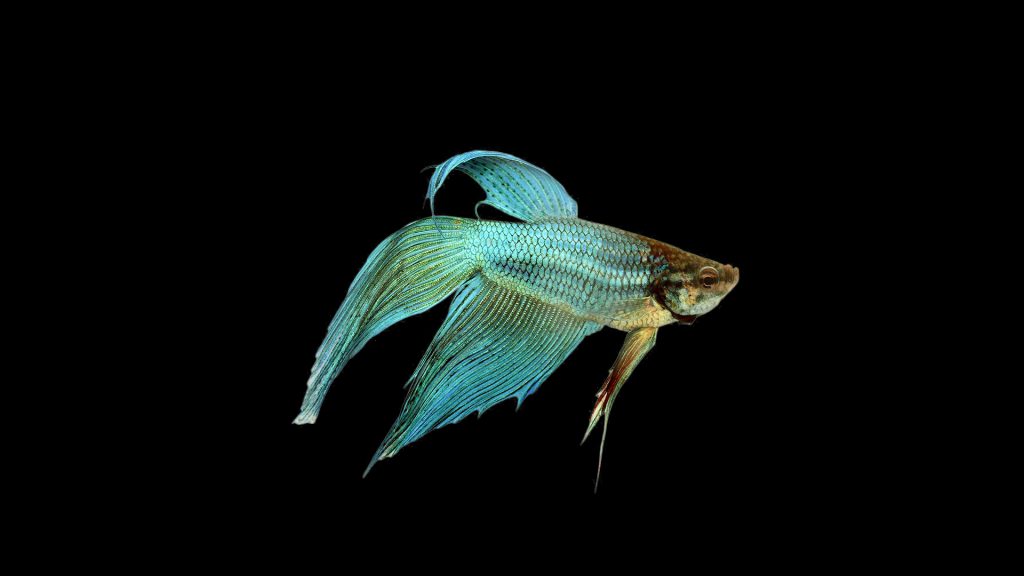
In 2022, Veiltail Betta fish were one of the most popular varieties of Betta fish kept in home aquariums. This variety was known for its vibrant colors due to four different color layers of cells within the skin and large, asymmetrical tail type that hung down towards the tip. The gene for this breed is dominant among bettas, making breeding them relatively easy compared to other varieties.
Veiltail Bettas are small in stature, measuring only 1.5 to 2 inches in length and require an ambient temperature of 72-81° F to thrive. Therefore, it is important to avoid extreme or rapid temperature changes and aim for a median temperature of 75° F. In terms of diet, Veiltail Bettas require a variety of foods such as live food, pellets and frozen food for optimal health.
When it comes to tank mates, some species that are recommended for Veiltail Bettas include cory fish, guppies, kuhli loaches and ghost shrimp. These should all be compatible with your Veiltail Betta and they should be able to get along with each other in a shared tank without any major social problems.
In terms of color variations, Steel Blue, Royal Blue and Turquoise Blue are the most common varieties seen in Veiltail Bettas. Steel-blue bettas are grayish-blue in color and have a ‘blue wash’ appearance while the royal blue and turquoise blue bettas have a vibrant and rich blue coloring which also has a hint of green in the case of turquoise blue bettas.
Overall, Veiltail Bettas were one of the most popular breeds amongst Betta enthusiasts due to their ease of breeding but their popularity has somewhat waned over recent years due to new “fancy” tail types like Crowntails or Halfmoons being introduced into the market.
Combtail
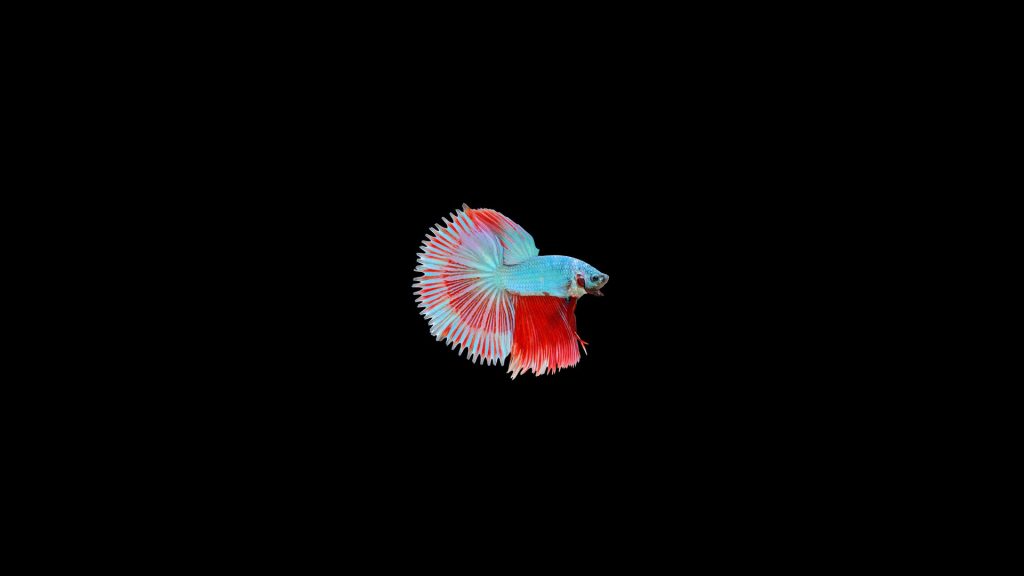
The Combtail betta is a type of fish that is often referred to as the half-sun betta. It is one of the newer varieties of betta and has become increasingly popular in recent years. The distinguishing feature of the Combtail is its tail, which has a dip between each ray and takes on the appearance of a wide-toothed comb. This breed is also known for its bright colors, including red, black, yellow and blue.
In terms of care, it is recommended that Combtail bettas are kept in an aquarium with moderate water parameters. The ideal water temperature should be kept at 75°-76° Fahrenheit to ensure a healthy environment for the fish. In terms of diet, these fish are carnivorous and need a diet rich in insects or commercial fish food specifically designed for them.
When it comes to breeding Combtails, the process can be quite complex due to their intricate fin shapes and patterns. Male Combtail bettas are typically more vibrant than females and display more intense coloration during breeding season. Additionally, they possess longer anal and dorsal fins than other varieties which makes them even more attractive to potential mates.
It’s important to note that because of their long fins, these fish require more maintenance than other types of betta fish. They need larger tanks with plenty of space for swimming so they can move freely without damaging their delicate tails or fins. Furthermore, regular tank cleanings are essential to prevent disease or infection from developing in your pet Combtail betta fish.
Overall, Combtail bettas are beautiful creatures that make excellent additions to any aquarium if you are willing to put in the time and effort necessary for proper care and maintenance. With their vibrant colors and impressive fin shapes, these unique species will bring beauty and life into your home while providing endless hours of entertainment!
Double Tail
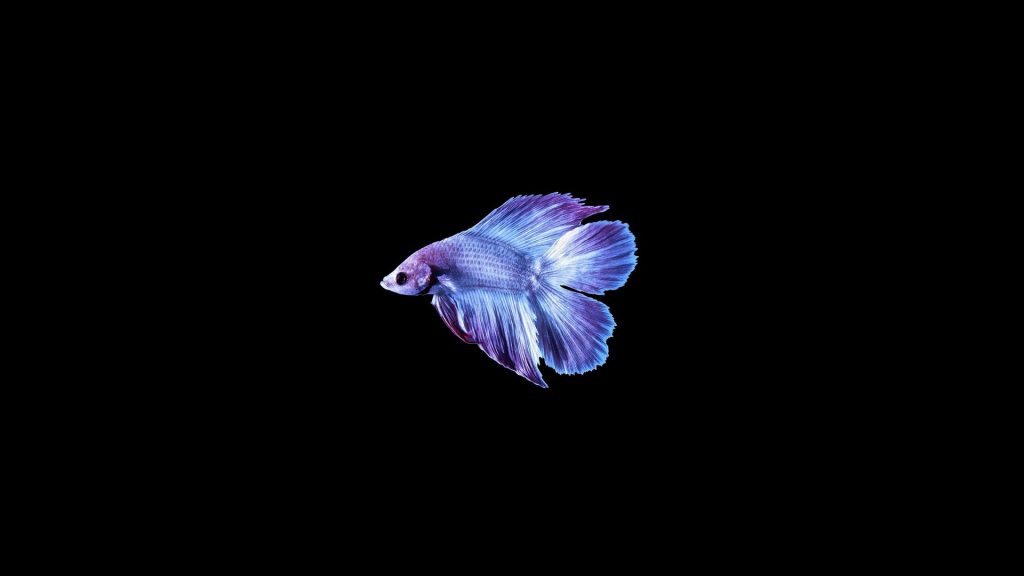
Double tail bettas were first discovered in the early 2000s and have since become a popular choice among aquarium hobbyists. These fish have heavy, split tails that resemble two separate tails, giving them an attractive appearance. Double tail bettas are carnivorous, so they need a high-protein diet of live foods, frozen foods, insect larvae, and high-quality fish flakes. In terms of lifespan, double tail bettas typically live for 2 to 5 years with proper care and maintenance.
To ensure your double tail betta stays healthy and happy for as long as possible, maintain their habitat at temperatures between 70 and 85 degrees Fahrenheit and ensure their water parameters are kept within ideal ranges (pH 6.5-7.5; ammonia 0 ppm; nitrate <40 ppm).
Male double tail veiltail bettas have unpaired fins with two caudal lobes while female double tail veil tails have two long, roughly almond-shaped tails placed one above the other. The gene for the double tail exists in all types of betta fish, resulting in a fish with two distinct caudal fins on either side of its body.
Spadetail
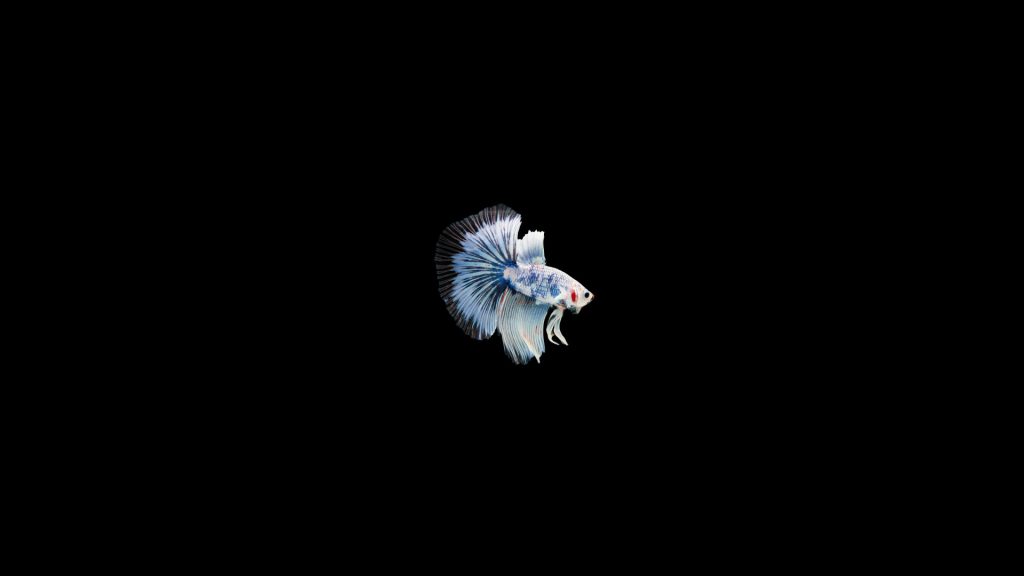
The Spadetail Betta is a rare variant of the popular Siamese Fighting Fish, or Betta Splendens. It has a fully rounded tail with no straight edges, and comes in many patterns and colors. Caring for a Spadetail Betta requires the same basic tank and water requirements as any other Betta fish, though they can be more aggressive than other variants. The Round Tail Betta is also known as F2 from VT x HM cross, meaning that it is a hybrid of two different species. It starts off with round tails but then the center grows faster and takes on a spade-shaped form. To keep its ray count low and avoid having it become a delta tail, owners will need to provide plenty of space for the fish to swim around in.
To ensure that this species remains healthy and happy, owners must keep an eye out for signs of stress such as clamped fins or hiding behavior. Regular water changes are also necessary to keep their tanks clean and clear of pollutants that could harm them. A varied diet including pellets, frozen food, live food, and vegetables can help them stay active and healthy while adding some much-needed variety to their days. Finally, it’s important to ensure that their tanks are kept at an appropriate temperature—ideally around 76°F—so they don’t get too cold or hot.
Overall, caring for a Spadetail Betta can be quite rewarding as long as you are willing to dedicate yourself to providing the best environment possible for your fish friend. With proper care and attention, these rare fish can thrive in captivity for years to come!
Halfmoon

Halfmoon betta fish have been kept as pets since before the 19th century and are among the most popular types of betta fish. They are known for their impressive 180-degree tail fin, which resembles a crescent moon when viewed head-on. Halfmoon bettas come in a variety of colors such as red, blue, green, purple, and orange. Fully grown adults reach an average length of three inches with a lifespan of two to four years.
Halfmoon bettas prefer tanks that are at least five gallons in size, however ten gallons is ideal. They require high-protein diets before breeding begins and can live with other fish species if they are not too aggressive. To breed Halfmoon Betta fish, you must select a healthy male and female between four and twelve months old. The male should be slightly larger than the female so that it can protect her during spawning.
When caring for your Halfmoon Betta fish it is important to maintain a stable environment with consistent water temperature and pH levels. Additionally, make sure to perform regular water changes to keep the tank clean and free from toxins or bacteria that may harm your fish’s health. It is also recommended to provide plenty of hiding spots such as plants or decorations so that your fish can feel secure in its environment. With proper care and nutrition, these beautiful creatures will bring joy into any home aquarium.
Over-Halfmoon
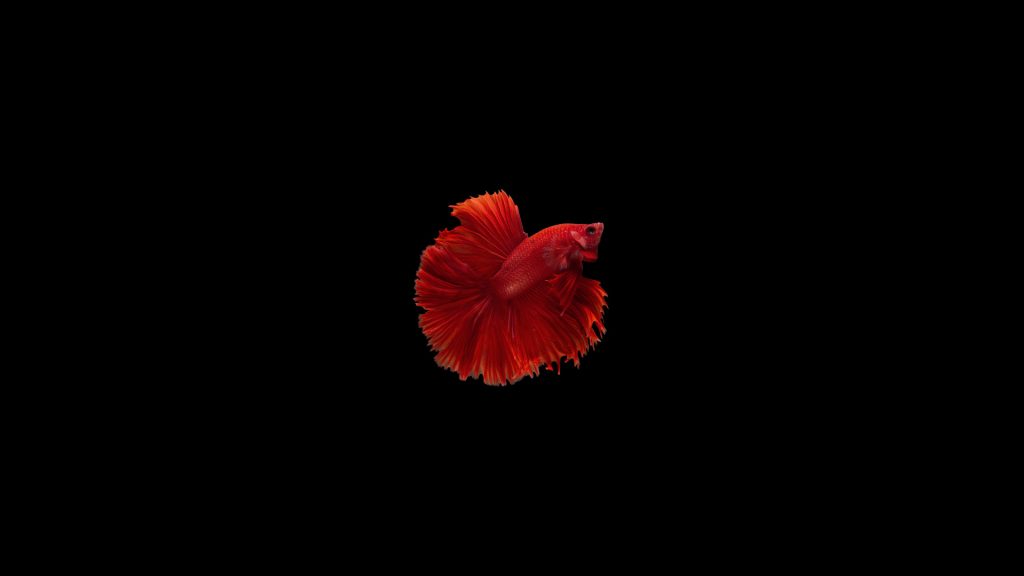
The Over-Halfmoon betta is a stunning breed of betta fish that stands out from the rest. This type of fish has long and flowing fins that can spread over 180 degrees when it flares up, resembling a half-moon or even an entire circle. The most common colors are red/orange and blue/green, but they can also come in rarer shades such as yellow or white with black stripes. These fish are known to be hardy and can tolerate a wide range of water conditions. They prefer warm water with pH ratings between 6.5 to 7. In terms of size, Halfmoon bettas usually range from 1-3 inches in length.
To keep these beautiful creatures healthy and disease free, it is important to maintain a calm environment for them with minimal water flow and moderate levels of General Hardness (GH). This will help reduce any agitation in the water and provide them with the best living conditions possible. It is also important to note that Halfmoons have been kept as pets since before the 19th century, making them one of the oldest tropical fish species around today!
Overall, if you’re looking for an exciting new addition to your aquarium, then consider getting an Over-Halfmoon betta! With their vibrant colors and unique tail shape, they make great pets that will bring life into any home aquarium.
Delta
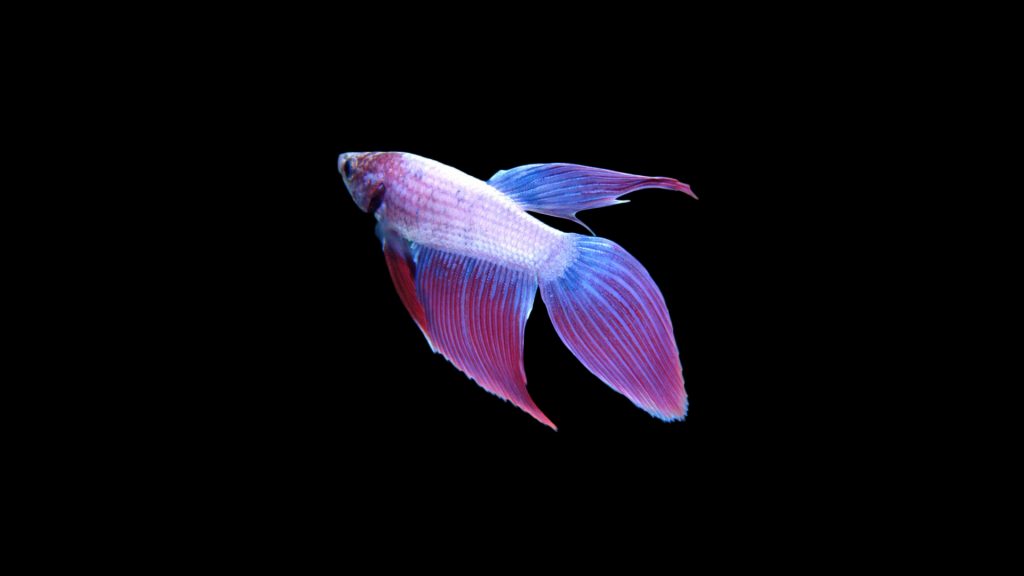
Delta betta fish are a popular species of betta due to their unique tail shape. Delta tails come in a variety of colors, ranging from red and blue to yellow, black, orange, turquoise, white, green, multi-colors, marble, purple and pink. Unlike Halfmoon bettas which have a tail spread of 180 degrees or more, Delta tails do not reach the full 180 degrees. As such, they do not overlap the dorsal and anal fins like Halfmoon bettas do. The smaller size of Delta tails makes them ideal for smaller aquariums.
In addition to their distinct tail shapes, Delta bettas also come with different scale patterns and fin types. Commonly seen scale patterns include Solid Bi-Colored Butterfly Cambodian Dragon Scale Marble Mask Grizzle Tricolored/Multicolored Piebald Betta Fin and Tail Types Veil Tail Combtail Crowntail Double Tail Half Moon Rosetail Super delta. These patterns can be further enhanced with different colors such as yellow, black, orange turquoise white green multi-colors marble purple pink metallic.
Female Delta bettas tend to have much shorter fins than males due to a recessive gene that causes them to be darker in color but also makes them infertile. Therefore it can be difficult to breed these fish successfully. Despite this difficulty in breeding them however they remain popular amongst aquarists due to their stunning color variations and interesting tail shapes.
Super Delta
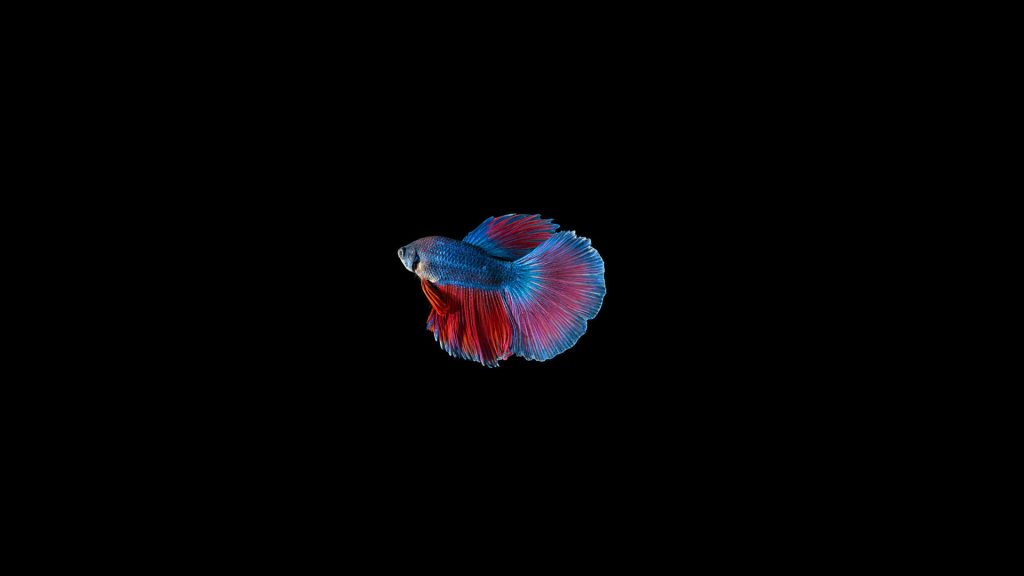
Super Delta Betta Fish is a unique variety of the betta, or Siamese Fighting fish, which belongs to the Gourami family of fishes. This type of betta has an elongated caudal fin with an angle of up to 150˚ between the upper and lower caudal rays. The tail becomes narrower as it gets closer to the body, widening toward the edges resembling the triangular shape of the Greek letter, Delta (∆).
Super Delta Bettas are bred from wild bettas found in the Mekong Delta region of Southeast Asia and require slightly acidic water with a pH rating between 6.5 and 7.5 for optimal health. They also prefer warm water temperatures between 75° and 86°F and should be kept singularly in aquariums of at least 4 gallons in size or with suitable, peaceful tank mates.
Super Delta Bettas have tails that almost reach 180 degrees but do not fully qualify as half-moons; they are distinguished by their spiky outer edge resembling rays of sunlight. With proper care, these colorful fish can bring joy to any aquarium setting.
Half Sun

The Half Sun Betta, also known as the HS Betta, is a relatively new hybrid of the Half Moon and Crown Tail Bettas. This type of Betta has become increasingly popular due to its unique tail shape which features a full 180-degree spread like the Half Moon but with rays that extend beyond the webbing of the caudal fin, similar to the Crown Tail. It is available in all colors and patterns, including Samurai and Mustard Gas.
Half Sun Bettas are relatively small fish and reach a maximum length of about 2 ½ inches when fully grown. They are native to rivers and marshes in Southeast Asia and do not tolerate extreme water temperatures well. The Comb effect is created by the fins’ rays slightly extending beyond the body of the fin, creating a comb-like appearance.
Due to their colorful tails, large fins, and unique patterns, Half Sun Bettas have become very popular among aquarists who appreciate their beauty. However, they can be quite aggressive so it is important to be selective when choosing other Bettas to keep in the same tank with them. In addition, they require some special care compared to other Betta species which includes maintaining stable water temperatures and providing plenty of hiding spots for them to retreat into when feeling stressed or threatened.
Overall, Half Sun Bettas are an attractive type of fish that make great additions to any aquarium if given proper care and attention. Their bright colors, long flowing fins, and unique tail shape make them a favorite among aquarists who appreciate their beauty and resilience.
Rosetail
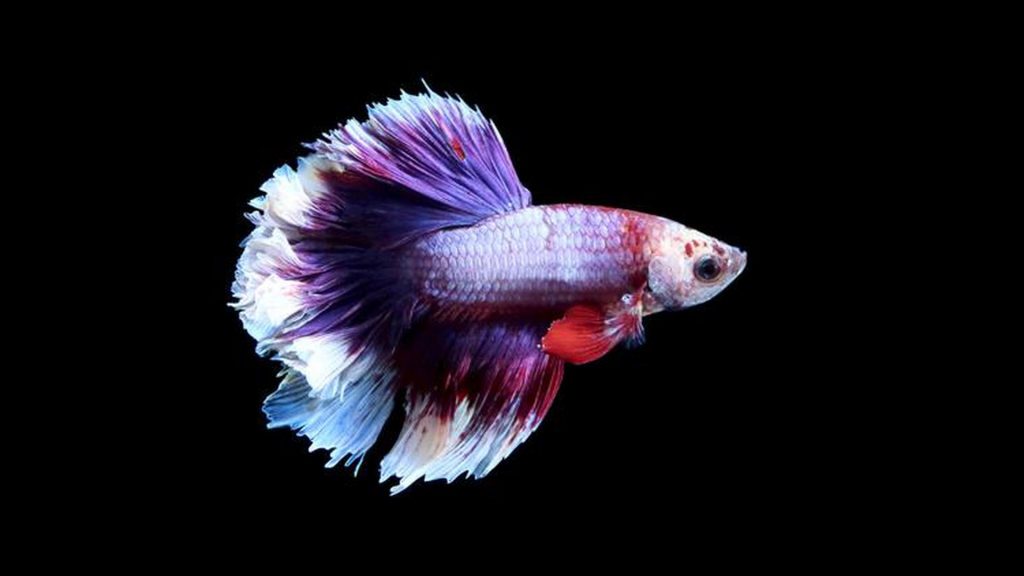
The Rosetail Betta has been a popular aquarium fish for many years. It is known for its large, flowing D-shaped caudal fin, which gives it an eye-catching appearance. Unfortunately, this beauty comes with a price, as many of these fish cannot swim freely due to their oversized tails. Rosetails need at least 5 gallons of tank space in order to feel safe and comfortable, but larger tanks may be preferred by some aquarists. The ideal temperature range for rosetail bettas is between 72-80 degrees Fahrenheit, and the water should have a pH range of 6.5-7.5 and a hardness level of 5-20 dH.
Rosetail bettas have one caudal fin, one dorsal fin, one anal fin, two pelvic fins, and two pectoral fins. Their bodies are covered with iridescent scales that overlap like shingles on the roof, and they are also coated with a thick mucus layer that provides extra gloss and protects them from parasites. This type of betta was created when breeders were striving to produce more branching in their Halfmoon lines in order to increase the likelihood of HM offspring; the result was a fish with much more than the typical 4-ray HM branching that creates a flower petal effect.
Although they can survive temperatures from 72-82˚F, Rosetail Bettas do best with stable temperatures in the 78-80˚F range. They are also active and social fish that need plenty of places to rest and hide while still having open swimming space; however they can be aggressive towards other species so caution should be taken when introducing them into an existing tank. Breeding rosetails is possible but not recommended due to problems in their genetics; they are often “tail biters” or “fin nippers” due to their oversized tails so clean water is essential in order to reduce the risk of infection or stress on the fish.
Feathertail

Feathertail Bettas are a type of Betta fish that were first selectively bred in 1910 by Frank Locke. These unique Bettas have a tail fin that is split into multiple sections and are known for their delicate, almost hair-like texture. They come in any color, although koi patterns are uncommon. While they may be stunning to look at, they can be difficult to breed due to the excessive mutations which cause branching and can lead to other mutations such as poor scales and short ventral fins. Due to these mutations, Feathertail Bettas should never be bred and show breeders usually cull them when they appear.
Caring for a Feathertail Betta requires providing light-flowing water with a filter on low setting, as well as making sure the water temperature is checked daily and the overall water quality is checked weekly. To ensure your Betta stays happy in its aquarium, consider adding tank mates such as bottom feeders like Corydoras or Plecos and schooling fish like Mollies or Rasboras – just make sure your tank is large enough for them! Additionally, you should provide your Betta with plenty of hiding places such as caves or driftwood so it can feel safe from predators.
In conclusion, Feathertail Bettas are an incredibly beautiful type of Betta fish that require special care due to their delicate nature and potential genetic defects. While they may not be the best choice for inexperienced breeders due to their difficult breeding process, they can make a stunning addition to any aquarium if cared for properly.
Plakat / Short Fin
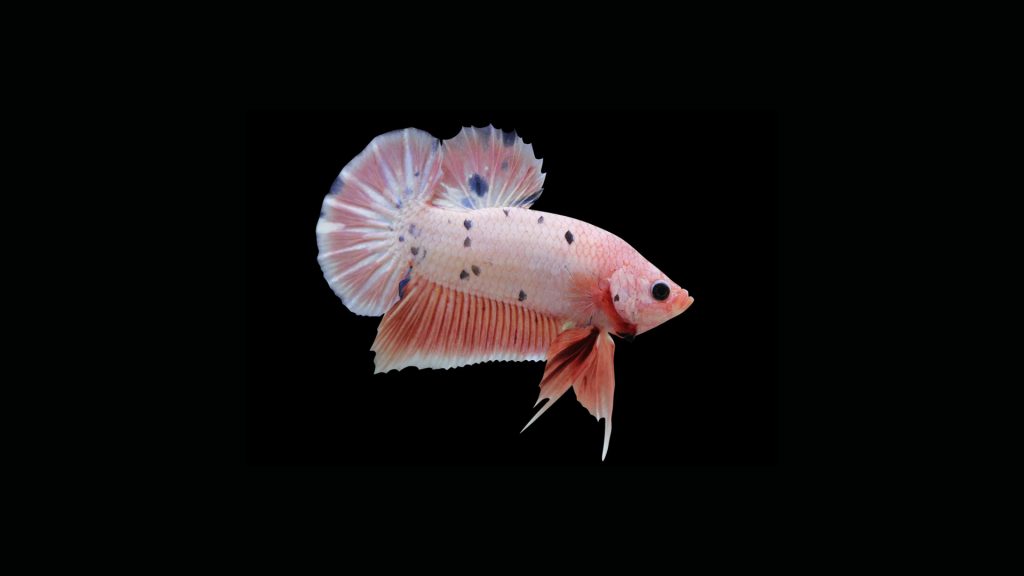
Plakat Bettas, also known as Short Fins, are a unique variety of the common Betta fish. These tropical fish have short fins and distinct hues that can complement any aquarium. Originating from Thailand, Plakat Bettas have been bred for centuries for the traditional Thai sport of fish-fighting. This has resulted in modern Plakats being more aggressive than other varieties of the species.
When it comes to their environment and care, Plakat Bettas prefer water temperatures ranging from 72-82 degrees Fahrenheit and a pH around 7.0. They also require easy access to the surface of the water in order to breathe in atmospheric air using their unique organ.
In terms of appearance, male Plakat Bettas usually have longer fins than female ones due to their shorter fins which make them ideal for fish fighting. Their caudal fin is rounded or slightly pointed in the middle with each caudal ray only splitting in two before reaching the edge of the fin (primary branching). Additionally, their dorsal fin is rounded or slightly pointed to the rear and their ventrals are relatively thin and long.
Despite being resilient creatures, Plakat Bettas can still suffer from common diseases such as Ichthyophthirius multifiliis (Ich) or Fin Rot if not given proper care and attention. Therefore, it’s important to maintain a consistent temperature range and pH level as well as regular water changes to keep your pet healthy and happy!
Dumbo Ear / Elephant Ear
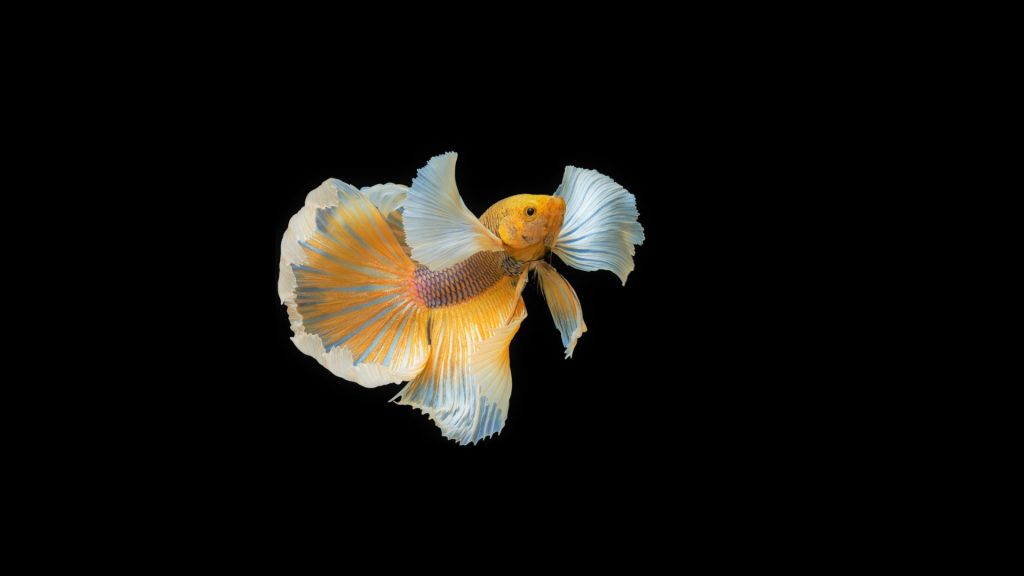
The Dumbo Ear Betta, also known as the Elephant Ear Betta or Dumbo Halfmoon Betta, is a unique species of fish native to Thailand. It can be identified by its large ears and slim profile that make its fins appear larger than its body. These bettas are highly sought after for their ornate fins and tails, with their pectoral fins standing out for their full and often frilly look.
These fish have an average lifespan of three to five years in ideal conditions, though some have been known to live up to 10 years. To ensure your Dumbo Ear Betta lives a long and healthy life, it should be kept in a spacious tank of at least 20 gallons with smooth gravel on the bottom.
In terms of diet, these fish feed on small insects and crustaceans in the wild, but they will also do well on specially formulated betta pellets, freeze dried food and flakes. It’s important to provide them with a balanced diet containing all the necessary nutrients they need to stay healthy.
Overall, the Dumbo Ear Betta is an incredible species of fish that is sure to bring joy and beauty into any home aquarium. With the right care and environment, these fish can easily live up to 10 years with proper nutrition and maintenance.
Types Of Betta Fish by Colors
Betta fish come in a variety of vibrant colors and patterns, making them popular among aquarium enthusiasts. There are many different types of betta fish based on their coloration, including albino, black, blue/steel blue/royal blue, clear/cellophane, chocolate, copper, green mustard gas, opaque/pastels, orange dalmatian, purple/violet, red, turquoise wild-type yellow & pineapple. The most popular type of black betta is the melano betta fish due to its rich black color. However breeding these can be difficult as the recessive gene that causes its dark hue also causes female melanos to be infertile.
The types of Betta fish varieties based on color found around the world are:
Blue Betta Fish
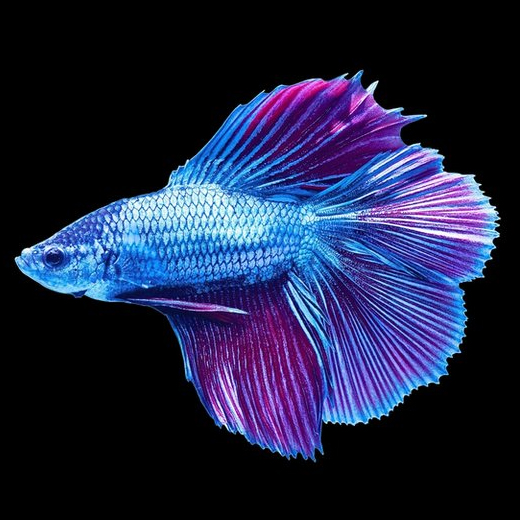
The Blue Betta fish is one of the most popular types of betta fish kept in aquariums. It is known for its bright blue fins and body, which can range from pale to vibrant in color. This type of betta fish has been selectively bred over the years, resulting in a variety of subtypes such as steel blue, royal blue, and turquoise blue. Clear or cellophane bettas are also popular, with their translucent fins and marbled bodies.
Blue Bettas are also closely related to red Bettas and have similar characteristics. They are often used for fighting due to their excellent camouflage capabilities, although this practice is discouraged by many people today. The size of these fish can reach up to 3 inches and they can live up to 5 years given the right conditions. They prefer cool water temperatures between 65 and 72 degrees Fahrenheit.
When it comes to breeding Blue Bettas, there are several variations that have been selectively bred over the years such as Halfmoon Bettas, Rosetail Bettas, Marble Bettas, Delta Tail Bettas, Elephant Ear/Dumbo Bettas, Double Tail Bettas and Plakat Yellow Dragon Females. Each type has its own unique traits such as continuous finnage from pelvic to dorsal fins or extensive branching within the tail itself which gives them a ruffled appearance similar to the petals of a rose.
Black Orchid Betta
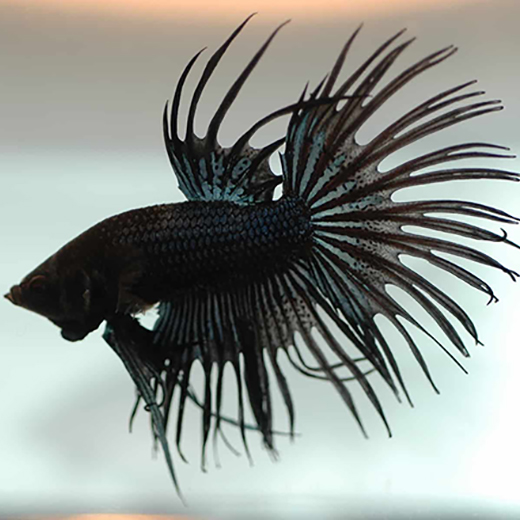
The Black Orchid Betta is a rare and unique fish that stands out for its dark coloration and large spread-out fins. These bettas are members of the Osphronemidae family, which also includes gouramis and paradise fish. Native to Asia, they live in the slow-moving freshwaters of Thailand, Vietnam, Cambodia, and Laos.
Black Orchid Bettas have dark black bodies that frequently feature a red undertone or iridescent appearance. Their distinctive look is completed by steel blue streaking or striping on the fins. Sometimes this creates a butterfly shape when combined with the fin shape. They can vary in rarity, but they’re generally not expensive; you can find one at a reasonable price of $15 – $20.
In terms of physical characteristics, Black Orchid Bettas have dark black bodies with streaks of steel blue in their fins that often form a butterfly pattern. They also may have reddish shades on their fins due to the marble gene’s influence. There are several types of black bettas, including black orchid, black ice, black melano, black lace, and the black devil. The intensity and depth of color vary among varieties and some have iridescence in blue, green and steel grey that overlays the black.
When it comes to tail type selection for Black Orchid Bettas there is VeilTail (VT), Combtail, Crowntail Delta Double Tail as well as Solid Bi-Colored Butterfly Cambodian Dragon Scale Marble Mask Grizzle Tricolored/Multicolored Piebald varieties available on commonly available varieties today.
Overall Black Orchid Bettas are beautiful medium-sized species of fighting fish with an exquisite look that makes them stand out from other betta species on the market today.
Red Betta Fish

The Red Betta Fish is an incredibly popular species of fish, native to Southeast Asia. In 2023, they remain a favorite amongst aquarists around the world. They are known for their vibrant red color and voluminous fins, making them a beautiful addition to any tank.
Red Bettas require warm water, with optimal temperatures between 72-80°F. They can tolerate higher temperatures during breeding which acts as a trigger to mate. They also thrive in shallow water and are carnivorous, requiring a protein-rich diet of insects and worms. Proper tank size for one Red Betta should be at least 10 gallons, with the optimal pH level being 7 (neutral).
There are 8 main types of Red Betta Fish: Betta Miniopinna, Betta Mandor, Betta Chloropharynx, Betta Hipposideros, Betta Spilotogena, Betta Tomi, Betta Chini and Siamese Fighting Fish. Each type has its own unique patterning and fin design. For example, the Siamese Fighting Fish has long fins that trail behind it while swimming and the Chini type is known for its vivid red coloration with white spots across its body.
For those looking to care for a Red Betta in 2023 it’s important to provide the right environment and diet in order to ensure your fish stays healthy and happy.
Rose Petal Betta
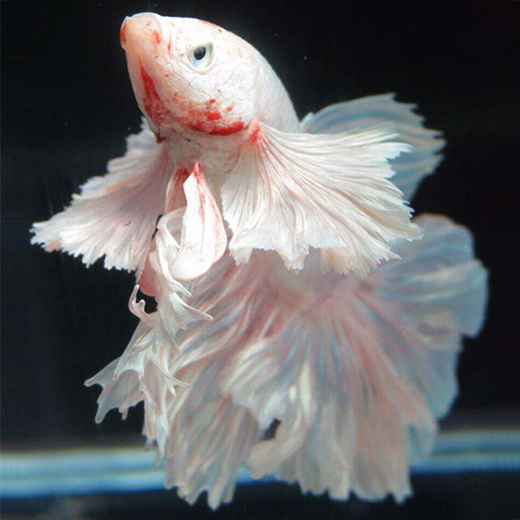
The Rose Petal Betta is one of the newest varieties of betta fish to hit the aquarium market. They are known for their ornate, rose-shaped tails, which can span up to 180° and give them a feathery, ruffled appearance. This type of betta is native to Southeast Asia and is popular among aquarium hobbyists due to its striking beauty.
Rose Petal Bettas are carnivores and prefer live foods such as bloodworms, brine shrimp, white worms, and mosquito larvae. They can also be fed freeze-dried krill or fry food wafers. These fish are easy to care for and may live for several years when kept in a well-filtered tank with low current and plenty of hiding places. The ideal temperature range for this species is between 72-82˚F with a slightly acidic to mostly neutral pH between 6.5-8.0; however, they do best when temperatures are kept stable in the 78-80˚F range.
Rose Petal Bettas come in a variety of colors including electric light blue, dark blue, copper, yellow, green, pink purple and white. Additionally, they can be divided into four pattern categories: Dragon Scale Betta, Butterfly Betta, Koi Betta and Marble Betta.
These unique fish make an excellent addition to any home aquarium; however potential owners should be aware that these fish are more expensive than other varieties on the market due to their rarity and elaborate fins. With proper care and maintenance Rose Petal Bettas can provide years of enjoyment for their owners!
Mustard Gas Betta

Mustard Gas Bettas were first discovered in Southeast Asia, particularly in Thailand, Laos, Cambodia, and Vietnam. They are a type of fish that is known for its vibrant colors and patterns, as well as its long fins. These fish have adapted to poor oxygen availability by developing a labyrinth organ. Mustard Gas Bettas come in many striking colors, such as yellow-brown, orange and blue, black, copper, chocolate green and pastel orange. They are also available in various patterns and scale designs such as solid bi-colored butterfly Cambodian dragon scale marble mask grizzle tricolored/multicolored piebald.
Mustard Gas Bettas are relatively peaceful fish and make good tank mates for other peaceful species like Tetras and Danios. However it is important to keep in mind that they may still become territorial with these other fish so having enough space for all of them is essential. The minimum tank size recommended for housing a Mustard Gas Betta is 5 gallons while the optimal temperature should be between 72° – 82° F (22.2° – 27.8° C) with a pH between 6.0 – 7.5 and KH between 2 – 12 dKH.
These beautiful fish have become increasingly popular among aquarium enthusiasts due to their unique appearance and vibrant colors which has led to selective breeding over many years creating 37 different types of betta fish from albino clear/cellophane white to yellow varieties with patterns such as veil tail combtail crowntail delta double tail etc., as well as scale designs like solid bi-colored butterfly Cambodian dragon scale marble mask grizzle tricolored/multicolored piebald fin tails etc..
Overall Mustard Gas Bettas are a unique type of freshwater fish that can add color to any aquarium with their bright colored bodies contrasted against their mustard fins making them an attractive addition to any hobbyist’s tank!
Yellow Betta Fish
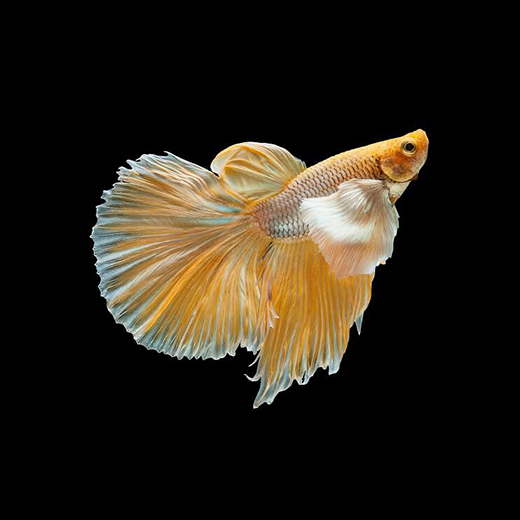
They had a bright lemon-yellow body and fins, with some variations including the pineapple Betta, which had the same yellow or orange body with black lines outlining its scales, giving them a pineapple-like appearance. To take care of them, they preferred warm water temperatures between 76 to 82°F and pH levels of 6.5 to 7.0. Their color depended on their environment, genetics, diet, and any bacteria and parasites in their water. Rare colors like solid orange bettas were also uncommon due to the difficulty of breeding them.
The most popular type of yellow betta was the halfmoon tail gene that bred more easily than other types. These bettas had long droopy tails with unequal upper and lower segments when flared. To produce a solid yellow color on these fish, four separate alterations needed to be made to three different pigmentation components – eliminating or minimizing black and iridocyte colors while replacing red with yellow and extending it over the whole fish.
These fish needed moderate water parameters kept between 72° and 81° Fahrenheit for optimum comfort and contentment levels. With proper care, these beautiful fish could be enjoyed by aquarists for many years as an attractive addition to any tank set up.
Green Betta Fish
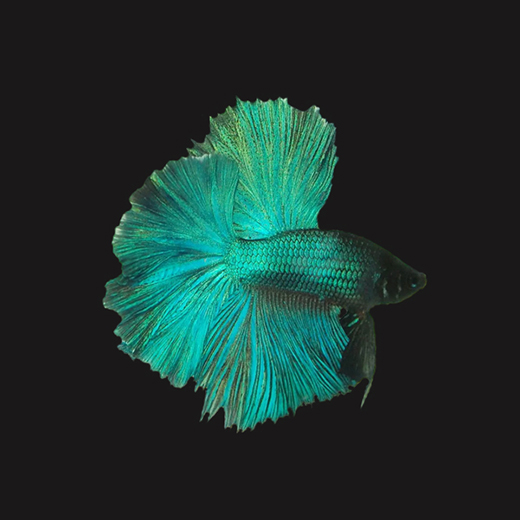
Green betta fish are a beautiful variety of freshwater fish that have been selectively bred over many years to create a wide range of colors and patterns. They come in various shades, from turquoise to a deep green that can appear almost black under certain lighting, and they usually have a metallic wash that shimmers in the light. The optimal temperature range for green bettas is 74°F-82°F, and they prefer living in water with a pH level between 6.8 and 7.5.
Some other types of green betta fish include Mustard Betta Fish, Elephant Ear Betta (Betta splendens var. Elephant Ear), Double Tail Betta Fish, and Full Green Betta Fish which is quite rare. Mustard bettas are dramatic and beautiful but come with a price – they are more prone to swim bladder disorder than other varieties. Elephant ear bettas break the mold since they aren’t named for their tails or colors; instead, their name refers to the shape of their fins which look like elephant ears! Double tail bettas have two caudal fins instead of one, giving them an impressive appearance but making them less agile swimmers than other types of betta fish. Finally, full green bettas are very rare and often have an iridescent green tone when exposed to light.
Overall, green betta fish make great pets due to their beauty and ease of care – all they need is some fresh water at the right temperature and pH level! Furthermore, they come in many different varieties so there’s something for everyone whether you’re looking for an exotic-looking double tail or a regal elephant ear type!
Purple Betta Fish
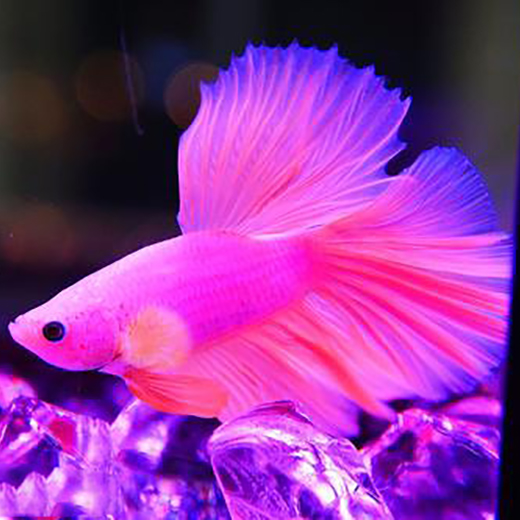
Purple Betta fish are a rare and sought-after species of tropical fish. In 2023, they remain one of the most expensive colored bettas available due to their rarity. True purple is an extremely rare coloring for a betta fish, and it is virtually unheard of to have a true purple betta. Instead, purple betta fish usually have shades of blue, red, or lavender. They can also come in various types and will affect their overall pricing – most costing around $10 to $25 each.
In order to keep your purple betta healthy and happy, it’s important to provide them with the ideal environment. This includes temperatures between 73-80 degrees Fahrenheit and a pH level between 6.0 – 6.5. Additionally, low oxygen levels should be maintained but still ensure that there is enough oxygen for your fish to survive comfortably.
It’s also important to maintain the proper pH level in order to protect your purple betta from ammonia poisoning; this should be checked periodically as part of regular tank maintenance. You should also clean your betta’s tank regularly; replace at least 15% of their water at least once per week or 20% if there are multiple fish in the tank.
Overall, Purple Betta Fish are beautiful creatures that require special care and attention in order for them to live long and healthy lives. If you’re looking for an exotic pet that will add color and life to your home aquarium, then consider adding one of these rare beauties!
Pink Betta Fish
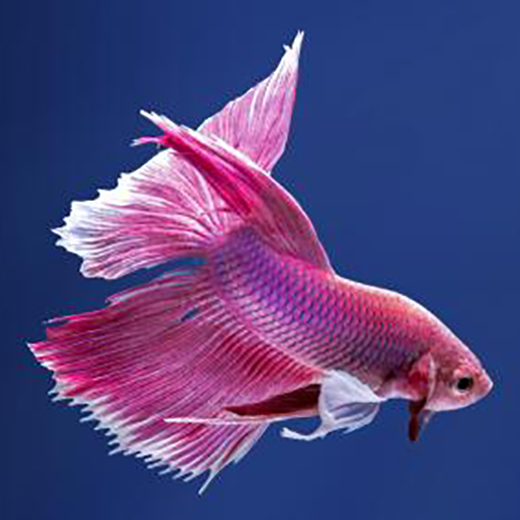
Little is known about their origin, but they are believed to have been selectively bred over many years in order to create a variety of different looking types. These fish can be distinguished by their pale flesh-colored bodies and bright solid colored fins. On average, these rare and beautiful fish cost around $25 each, although prices may vary depending on the gender and where it is purchased from.
When cared for properly, Pink Betta Fish can make an excellent companion with unique personalities and temperaments. They should be kept in water that has a neutral pH level (7) with low levels of ammonia and nitrite (as close to zero as possible). To ensure proper nutrition and health, it is recommended to feed them high quality pellets or freeze-dried foods every 6 months or so at a cost of less than $20.
White Betta Fish
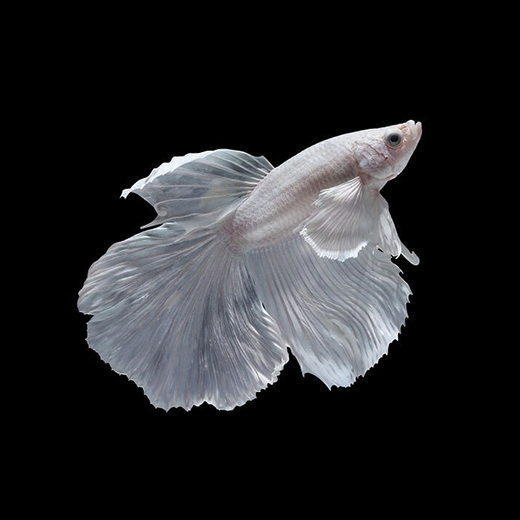
This pure white fish has an opalescent sheen and can sometimes appear pinkish in color, likely due to its skin being visible through its scales. White opal bettas are peaceful compared to other betta varieties, making them a great choice for novice aquarists.
When keeping a white opal betta, it is important to provide them with a tank that is no smaller than five gallons, preferably larger. To ensure their health and well-being, the tank should have plenty of plants and low flow filtration. Additionally, water temperature should be checked daily and water quality should be checked weekly.
White opal bettas require minimal food since they are not as active as other varieties and do not require as much energy. Feeding them once every six months or so is usually enough to keep them healthy.
Overall, white opal bettas are an ideal choice for beginner aquarists due to their peaceful nature and low maintenance requirements. With proper care and maintenance, these beautiful fish can bring joy to any home aquarium.
Orange Betta Fish
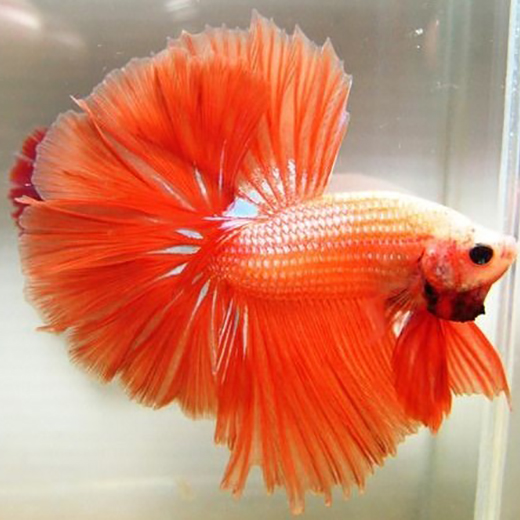
Orange betta fish are a popular species of freshwater fish that come in many different colors and patterns. Orange bettas are known for their bright orange coloring and vibrant fins. They are often found with striking orange fins and a body color ranging from light tan to dark brown. In addition, they can also have marbling on their bodies or translucent fins.
The most common type of orange betta is the bi-color brown and bi-color orange betta, which has an orange body color combined with striking orange fins. Another type of orange betta is the marble betta, which has an irregular blotchy patterning on its body in a bold solid color like red or blue. Elephant ear bettas (EE) are also known for having enlarged pectoral fins that resemble large ears when they flare out. Non-red genes come in two varieties: yellow (NR1) and orange (NR2). When breeding these fish, it’s important to remember that the results may not be as expected as the offsprings may not have the same discoloration as their parents.
In terms of fin types, there are several variations including veil tail, combtail crowntail delta double tail, halfmoon super delta and feathertail bettas. Other types include black lace and metallic black bettas which have darker color pigments than other fish but not quite as dark as melanos. It’s important to note that all these varieties require different care depending on the size of the tank and water conditions you provide them with.
In conclusion, there are many different varieties of orange betta fish available in pet stores today ranging from bi-color brown/orange to marble patterns to elephant ear varieties. Each variety requires its own unique care instructions so make sure you research what kind of environment your desired fish needs before purchasing one!
Cellophane Betta
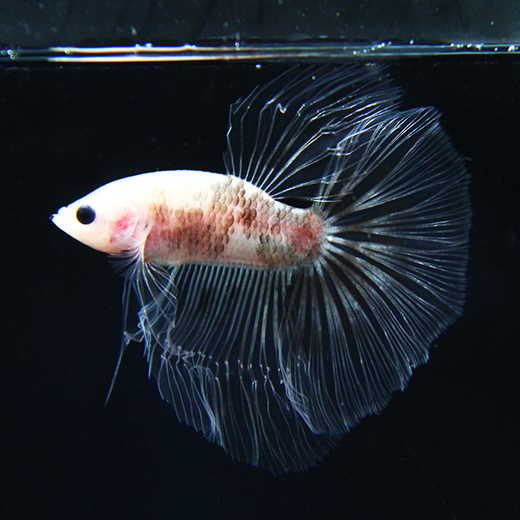
Cellophane Betta, also known as Clear Betta or See-Through Betta, is a popular variety of betta fish that has become increasingly popular in recent years. These bettas have translucent scales that appear whitish under specific lighting and give them an almost see-through appearance. With the right care, cellophane bettas can grow up to 2-3 inches in length with vibrant colors ranging from pure sheer to milky white opaque tint.
These fish are typically carnivorous and require a diet of insects in the wild. It is important to remember that female cellophane bettas are generally more docile than males, but both sexes can still display aggression if not handled properly. Therefore, it is important to choose tank mates for cellophane bettas carefully.
Apart from their unique coloration, cellophane bettas have other distinguishing features such as their fin and tail types. Veil tails are the most common type of fin seen on these fish, but combtails, crowntails and double tails are also quite common. Additionally, bi-colored varieties with a body of one color and fins of another color are also available.
In order to ensure your cellophane betta lives a long and healthy life, it is important to provide them with suitable living conditions. Bettas thrive in moderate water temperatures between 72° and 81° Fahrenheit with an average temperature of about 75° being ideal for them. Furthermore, proper filtration systems should be set up in the tank along with frequent water changes for optimal health of your pet fish.
Types by scale and patterns
When it comes to betta fish, there are many different types of scales and patterns available. The most common include the Solid, Butterfly, Dragon Scale, Piebald, Full Mask, Grizzle, Bi-Color and Marble varieties. Each of these types has unique characteristics that make them stand out from one another.
Dragon Scale Betta

The Dragon Scale Betta is a popular type of freshwater tropical fish that has become increasingly popular in recent years. These fish are known for their thick, white scales that cover their bodies, giving them an eye-catching look. This scale pattern is the result of a dragon gene present in these Bettas. The Dragon Scale Betta is often more expensive than your typical Betta Fish, with males typically costing around $15 to $25 from a pet store.
These Bettas have been selectively bred over the years to create a variety of different looks and characteristics. They can come in many colors including metallic blues, greens, and reds and may even have unique patterns or shapes on their bodies. In addition, they often have long fins and flowing tails which make them graceful swimmers and attractive to fish enthusiasts.
Unfortunately, the consequences of selective breeding can sometimes be seen in these Bettas as some may suffer from eventual blindness due to genetic modification. It is important to ensure that any Dragon Scale Betas you purchase are from reputable sources who do not practice unethical breeding practices.
Overall, the Dragon Scale Betta is a beautiful species of fish that can add a touch of fire to any aquarium. With its vibrant colors and unique scale patterns, this breed of Betta Fish is sure to be admired by all who cross its path. As long as you take proper care when purchasing these fish and provide them with adequate living conditions, they can make wonderful additions to any home aquarium!
Butterfly Betta
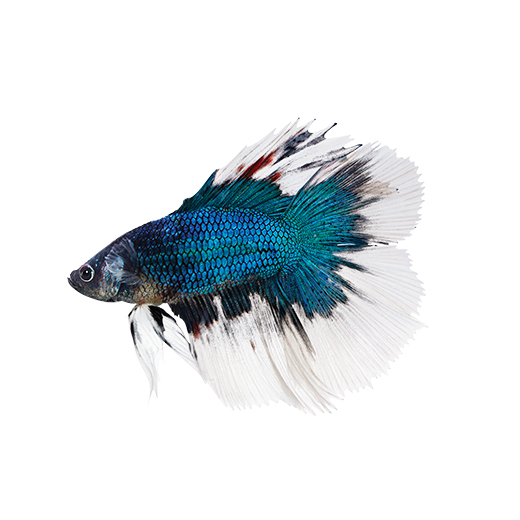
Butterfly Betta (Betta splendens var. Butterfly) is a popular species of betta fish that is prized for its striking colors and long fins. They are relatively small fish, growing up to an average size of 2.5 inches, and cost between 10-15 dollars on average. If you’re looking to keep one in your home aquarium, it’s important to provide them with an environment that is suitable for their needs.
A tank size of at least 5 gallons is recommended for these fish so they have enough space to move around and swim freely. The water should also be kept at a pH of 6.8-7 and a degree of General Hardness (dGH) between 5-20 in order to keep your butterfly betta healthy. Additionally, adding live or fake plants can help create a natural habitat for your fish and make it more comfortable in its home.
It’s also important to properly maintain the tank by regularly changing the water, cleaning the substrate, and checking the filter and heater according to manufacturer instructions. Doing so will help ensure that your butterfly betta has access to clean, healthy water which will improve its quality of life as well as reduce any potential health issues or diseases down the line.
Overall, if you follow these steps when setting up a tank for your butterfly betta, you can rest assured knowing that it will have a safe and comfortable environment in which it can thrive!
Bi-Colored Betta
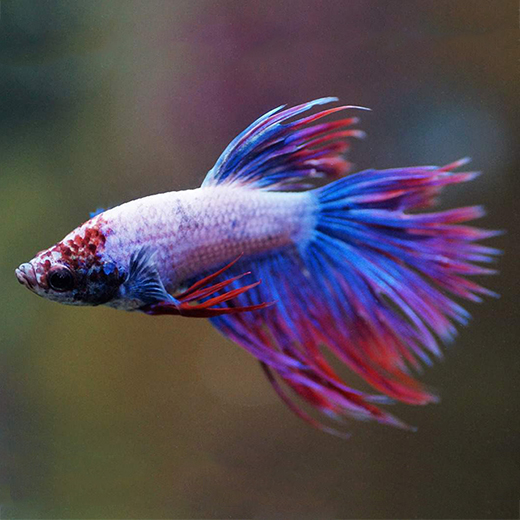
Bi-colored betta fish are a type of betta with two distinct colors – one for the body and another for the fins. These fish have become increasingly popular in recent years due to their unique look and vibrant colors. Bi-colored bettas come in a wide variety of combinations, ranging from light bicolored to dark bicolored. Some examples of bi-colored bettas include white-and-red, black-and-yellow, and blue-and-orange.
Bi-colored bettas are typically quite hardy and easy to care for, making them an ideal choice for beginner aquarists. They do well in tanks with plenty of hiding spots and live plants, as well as a filter to help keep the water clean. Like other bettas, bi-colored varieties should be kept in tanks that are at least two gallons in size, with temperatures between 78 and 82 degrees Fahrenheit.
When it comes to diet, bi-colored bettas require both live food and prepared pellets or flakes. Live foods such as brine shrimp or bloodworms provide essential vitamins and minerals that can’t be found in prepared foods alone. To ensure proper nutrition for your bi-colored betta, feed them a variety of these foods on a regular basis.
To keep your bi-colored betta healthy and active, it’s important to provide them with adequate exercise by providing plenty of swimming space in their tank. Additionally, regular water changes are necessary to maintain good water quality and prevent disease from developing in the tank. Lastly, bi-colored bettas can also benefit from occasional aquarium salt baths which can help reduce stress levels and aid in healing any minor injuries or illnesses they may develop over time.
Overall, bi-colored bettas are beautiful fish that make great additions to any aquarium! With proper care and maintenance they can live up to four years or longer, bringing joy to their owners for many years to come!
Solid Betta

Solid Betta Fish were originally found in Southeast Asia and have been popular among aquarium keepers since the early 20th century. These unique fish are known for their vibrant colors and tail shapes, with solid-colored Betta fish being rarer than multi-hued varieties.
The average size of a Solid Betta is 2 1/2 to 3 inches, and they prefer still water in their habitats. It’s important to maintain cleanliness in the tank, as these fish are susceptible to bacterial infections such as fin rot if the tank isn’t kept clean. To keep your Solid Betta healthy, it’s best to provide them with a five-gallon tank or larger, along with a good filter and heater. Live plants can also be added for decoration, providing your fish with places to hide.
These fish should be fed twice a day – once in the morning and again in the evening – but adult Bettas may only need one feeding per day. Commercial food designed specifically for Bettas’ dietary needs should be used, as they are carnivorous and eat insects in the wild.
Overall, Solid Bettas require proper care and attention to stay healthy. They need plenty of clean water, live plants for hiding spots, and commercial food formulated specifically for betta’s dietary needs. With the right care, these beautiful fish can live up to three years or more!
Cambodian Betta
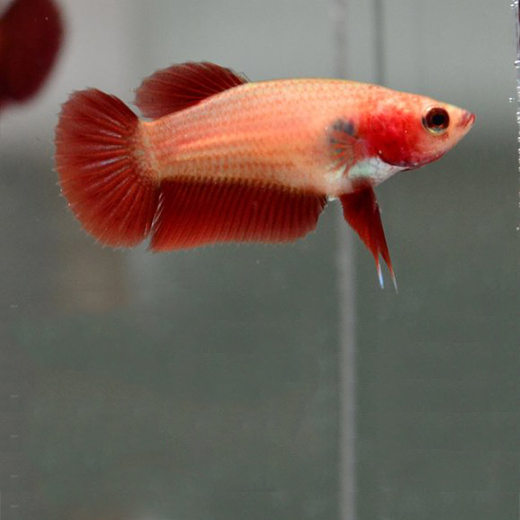
Cambodian betta fish have long been a popular choice for aquarists due to their unique coloring and elaborate, flowing fins. These fish have a flesh-colored body, with vibrant red or violet-red fins. Cross-breeding varieties such as green Cambodians, blue Cambodians and even black Cambodian bettas can be found in pet stores. Electric blue bettas are also a rare but striking option with bright blue coloration all over their bodies and fins.
In the past, it was possible to find true Cambodian bettas with light pink bodies and vibrant red accents on their fins. However, these fish are now increasingly difficult to find due to selective breeding and hybridization of other varieties of betta fish. It is important to maintain a tropical habitat in the aquarium at temperatures between 76-81 degrees Fahrenheit, with an ideal pH range of 6.5-7.5 and zero parts per million (ppm) ammonia levels in the water.
When attempting to breed a perfect Cambodian betta, it is best to start with a male who is as pale as possible without any black or red patches on the body. This male should then be crossed with a female Cambodian that has particularly clean-bodied features. Steel blue, royal blue and turquoise blue bettas are also popular types of blue colored betta fish available on the market today; steel-blue having grayish-blue coloration while royal and turquoise blues having vibrant hues ranging from deep blues to hints of green.
GloFish bettas are another type of colorful variety that do well in moderate water parameters; they prefer temperatures between 72° – 81° Fahrenheit with an average temperature around 75°F being ideal for them. All types of Betta fishes require diligent maintenance when kept in captivity including regular water changes and cleanliness of their tank environment as well as providing adequate nutrition for optimal health and development of these beautiful creatures!
Marble Betta
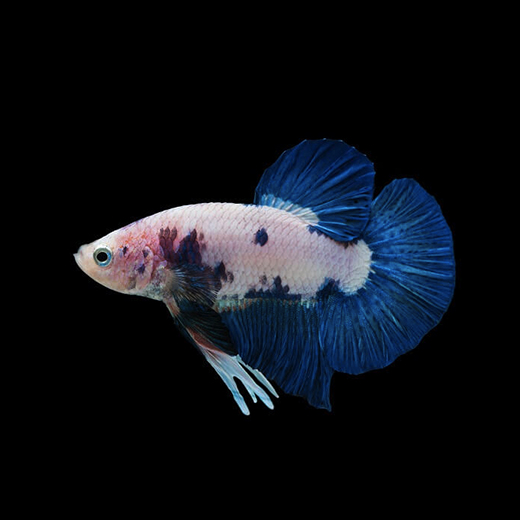
The Marble Betta, also known as the Clouded Marble Betta, is a species of fish in the family Osphronemidae. It was first discovered in Thailand and Laos and has since become a popular aquarium fish. In traditional Thai medicine, it is also used for its medicinal properties. The Marble Betta is characterized by its unique color pattern, which consists of dark, solid-colored blotches on a light-colored body or vice versa. This trait doesn’t show up right away and can take months or even years to fully develop.
When caring for a Marble Betta, it’s important to provide them with the right water conditions. Ideally their water should have a pH range of 6.5-7.5, ammonia levels of zero parts per million (ppm), nitrate levels of under 40 ppm and nitrite levels of zero ppm. To make sure tap water is safe for your betta fish, use an appropriate water conditioner/dechlorinator before adding it to the tank.
In terms of diet, Marble Bettas are omnivorous and will eat both plant matter and small insects such as bloodworms, mosquito larvae and brine shrimp. As with all betta fish, it’s important to feed them no more than twice daily in small amounts so that their digestive system can process the food properly.
It’s also important to provide your Marble Betta with plenty of hiding places within their tank so they can feel secure from predators or bright light sources. When setting up their tank environment, you should also avoid overstocking as this can lead to poor water quality which can cause health problems for your betta fish.
Overall, the Marble Betta is an attractive and interesting species of fish that makes a great addition to any aquarium setup if cared for properly. With its unique color pattern and hardy nature, it’s no wonder why this species has become such a popular choice among aquarists around the world!
Koi Betta
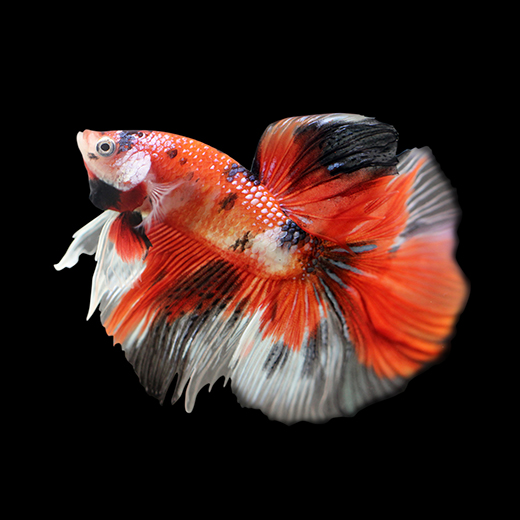
Koi betta fish are a unique and beautiful type of freshwater fish that have become popular in the aquarium hobby. They are members of the Betta family, and have distinct markings and color combinations. They are short-finned, growing to be about three inches long, and males have wider, longer, and bulkier ventral fins. Koi Bettas require high-protein, high-fiber fish food and live insects or larvae should be fed to them in captivity to maintain proper health.
The natural habitat of koi betta fish is heavily vegetated, so they need plenty of plants in their tanks for hiding or sleeping spots. Koi Betta Fish Care is relatively easy making them a fine choice for beginners who can provide a tank at least three gallons in size with the right water temperature (77-80 degrees Fahrenheit) and pH levels. Water changes should be done weekly using a water testing kit to check that the parameters are correct. Lighting conditions should also be similar to our own so that these fish can build a stable routine with regular feeding times.
Koi bettas have an expected life expectancy of 2-5 years if properly cared for. The “jumping gene” called Transposons causes color changing over time due to the unique DNA sequences which can move along the genome. Marble bettas are usually only two marbled colors on top of their base color, but Koi betta fish can be three marbled colors on top of their base color, making them even more stunning!
Mask Betta

The Mask Betta is a type of betta fish that has been bred to have a uniform color from head to tail. This variant has become increasingly popular among aquarists over the past few years due to its striking appearance and bold colors. Mask Bettas are native to Southeast Asia, specifically the Malayan Peninsula and parts of Thailand. They were initially bred for the purpose of fish fighting but have since become popular in home aquariums as well.
These fish typically have a solid dark body with white or slightly pink skin flushed face and fins with either a butterfly-like or marbling pattern. Their faces are usually darker than the main part of their bodies, however with the mask variety, their faces are the same color and shade as the rest of their bodies making them stand out even more. Keeping Mask Bettas requires a tank that is at least five gallons in size with filtration system and plenty of plants to keep them happy. The temperature should be kept around 80°F for optimal activity levels and they do not require food very often so this should cost less than $20 every 6 months or so.
Overall, Mask Bettas are an attractive addition to any aquarium due to their unique colors, patterns, and fin configurations. Although they require some extra care when it comes to keeping them healthy, they can provide hours of entertainment for anyone looking for an exciting pet fish.
Multi-colored Betta
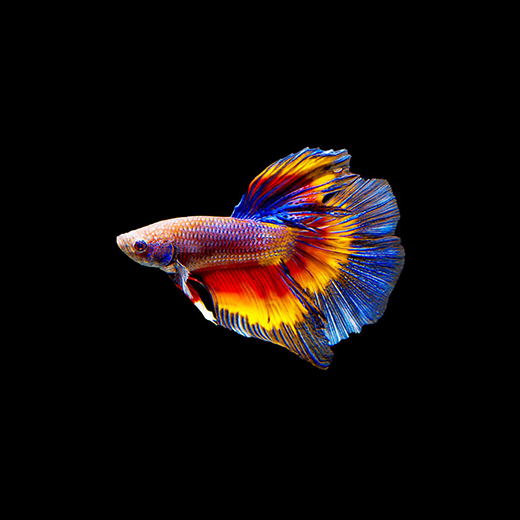
Multi-colored Betta fish have become increasingly popular among pet owners in recent years. These vibrant, eye-catching fish come in a variety of colors, patterns and tail types, making them one of the most diverse species of aquarium fish. The range of colors you see on your betta fish is the result of four different layers: the yellow layer (bottom layer), black layer, red layer, and iridescent layer (top layer). Within each layer are dominant and recessive genes that determine the expressed colors your betta fish will have.
The most common colors of GloFish betta are fluorescent green, yellow, orange, red and blue. Marble betta fish also have irregular blotchy or splash-like patterning all over their bodies with a pale base color and bold solid patterns such as red or blue. Other multi-colored bettas may be two-toned with various pigmentations ranging from vivid to plain whites and blacks. Bettas that display vibrant colors with an active interest in their surroundings are usually healthy while those that don’t eat or act lethargic could be sick.
Bettas can be kept with placid bottom feeding dull colored fish but should not be kept with larger or more aggressive species as they can become stressed out or even injured. It is important to provide a good environment for multi-colored bettas by keeping the water clean and maintaining an appropriate temperature between 74-82 degrees Fahrenheit. Additionally, providing a varied diet including frozen foods like brine shrimp can help keep your betta healthy and colorful.
Piebald Betta
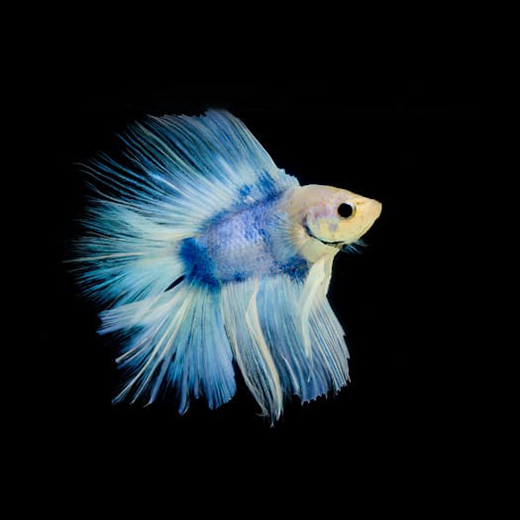
The Piebald betta is a unique type of betta fish that has become increasingly popular in recent years. It is known for its fleshy or opaque head, which stands out against the rest of its body. This pattern is often combined with either the marble or butterfly pattern. The Piebald betta is a short-tailed variety, more closely related to wild betta splendens than other varieties. Males can be identified by their longer ventral fins, more rounded caudal fins, and sharply pointed anal fins. They come in various multi-hued colors and can grow to be around 2 1/2 to 3 inches on average.
The GloFish betta will thrive in a tank with moderate water parameters and an ideal temperature between 72° and 81° Fahrenheit. A water heater can help maintain this temperature. Betta fish have small stomachs so it’s important not to overfeed them; a good daily portion of food for an adult betta is about 1.8 grams regardless of the type of food they are eating. As with all types of fish, regular water changes are important for maintaining healthy levels of ammonia, nitrites, and nitrates in the tank.
Piebald Bettas have become increasingly popular due to their unique appearance and vibrant colors which include bicolor (red and black or orange and yellow), pineapple (red with yellow markings), marble (mostly solid color but with white patterning), Cambodian (solid color body but with red or blue fins), lipstick (fleshy or opaque head) and wild type (yellow & pineapple). With proper care and maintenance these beautiful fish can live up to three years in captivity making them an excellent choice for any aquarist looking for a long-term pet!
Wild Type Betta
Wild Type Betta is a species of betta fish native to the Mekong Delta region of Southeast Asia. It typically ranges from 4-6 cm (1.5-2.4 inches) in size and is known for its aggressive behavior, although this trait does vary between individuals.
Wild Type Bettas are bubblenesters and can be relatively easy to breed if kept in a tank of at least 20 gallons with plenty of natural cover and plants for them to hide in. They have plain colors with shades of red or brown, but those bred in captivity can come in any vibrant color or shade. One unique feature of Wild Type Bettas is their ability to hatch eggs in their mouths and protect them that way, an adaptation that has been passed down through generations.
Conclusion
Betta fish have been a popular choice of pet for many years due to their vibrant colors and personalities. In this guide, we’ve explored the different types of betta fish available, as well as their care requirements. With proper care and maintenance, bettas can live up to five years or more. To ensure that your betta is healthy and happy, it’s important to provide them with the right tank setup, such as a five-gallon tank or larger with a good water filter and heater. The water should be kept between 75-80 degrees Fahrenheit and pH levels should be neutral (around 7). Bettas are carnivores so they need a protein-rich diet and should also be given an aquarium salt solution every once in awhile. Lastly, when introducing new betta fish into the tank it’s important to acclimate them slowly by adding small amounts of tank water into the bag they come in before releasing them into the tank. With these tips in mind, you can easily provide your bettas with all of their needs!
Other betta fish articles you might find interesting:
Hello, I’m Paul, a dedicated fish enthusiast with 15 years of experience. My family finds my hobby peculiar, but they humor me! Besides fish keeping, I enjoy playing the bass guitar and learning about wildlife adaptation.
I find fish captivating; observing their behaviors and routines in an environment so different from ours is enthralling. I started with a small aquarium and guppies, later progressing to African cichlids, which drove me to take fish keeping more seriously. Creating an artificial ecosystem that supports life brings me immense joy.
The goal of 4aquarium.com is to become a one-stop shop for all aquatic needs, cutting through the clutter of irrelevant information. I invite you to visit often, and I welcome any questions or comments via the contact form on fishkeepingcentral.com/contact-us/. Thank you for reading my story!

